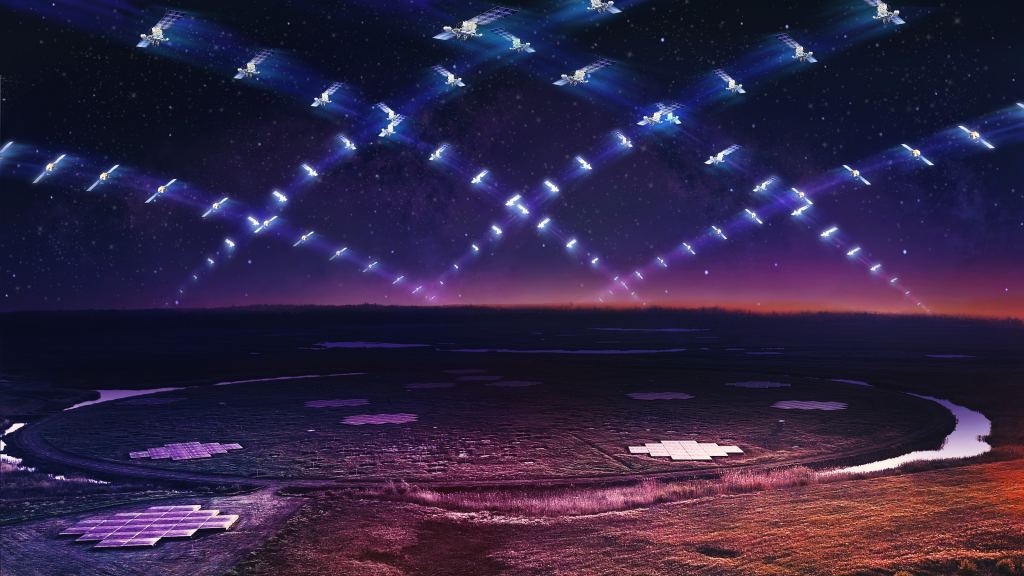Astronomers Map out the Radio Waves Coming From Large Satellite Constellations
By Brian Koberlein
Satellite internet constellations such as Starlink have the potential to make connect nearly the entire world. Starlink already provides internet access to remote areas long excluded by the internet revolution, and other projects such as OneWeb and Project Kuiper are in the works. But there are side effects to creating a massive array of low-orbit satellites, and one of them is the potentially serious effect on astronomy.
Much of the attention on Starlink and astronomy has been focused on astrophotography, and how once fairly clear skies are often filled with bright trails from Starlink satellites. For hobbyists and even some professional astronomy, this can be mitigated through software tricks. But some research areas such as the search for potentially hazardous asteroids are already being impacted by satellite trails. Starlink has promised that future generations of satellites will be less optically bright, but outside the optical spectrum, there are more challenges, particularly at radio frequencies.
Starlink satellites communicate both with each other and with ground antennas via high-frequency radio. Whereas optical astronomy is affected by reflected light from satellites, radio astronomy is affected by transmitted light. The Starlink satellites are essentially radio flashlights that can blind sensitive radio telescopes. They have to be in order to work as communication satellites. While Starlink is already working with radio observatories to mitigate this effect, such as having no-transmit zones over sensitive observatories, a new study shows that this is not enough.
A new study published in Astronomy & Astrophysics shows that even when care is taken to limit radio emissions near radio telescopes, the Starlink satellites still emit bright radio light at low frequencies. The authors used data from the LOW Frequency ARray (LOFAR) in the Netherlands, which observed 68 Starlink satellites as they passed over the observatory. The team found that 47 of them emitted radio light in the 110 to 188 megahertz range. Part of this range includes frequencies protected by the International Telecommunications Union (ITU). The 150 to 153 MHz range is reserved exclusively for radio astronomy.
While the study focused on existing Starlink satellites, future constellation projects will also pose a hazard. The frequency range in question can be particularly difficult to shield, so it is likely that other satellites will pollute this frequency range. To show this, the team looked at how other constellations could affect radio astronomy in the future. They found that there is a real threat to radio astronomy. Not only could the 150 – 153 MHz range become useless to astronomers, other vital frequency ranges could as well.
This study shows the need for constellation satellite companies to work closely with radio astronomers to see how radio light pollution can be mitigated. Otherwise, as we rush toward a world where everyone has access to satellite communication we will lose some of the vital tools we have for understanding the cosmos.
Reference: Di Vruno, F., et al. “Unintended electromagnetic radiation from Starlink satellites detected with LOFAR between 110 and 188 MHz.” Astronomy & Astrophysics (2023).
The post Astronomers Map out the Radio Waves Coming From Large Satellite Constellations appeared first on Universe Today.

July 7, 2023 at 09:12PM
via Universe Today read more...

Post a Comment